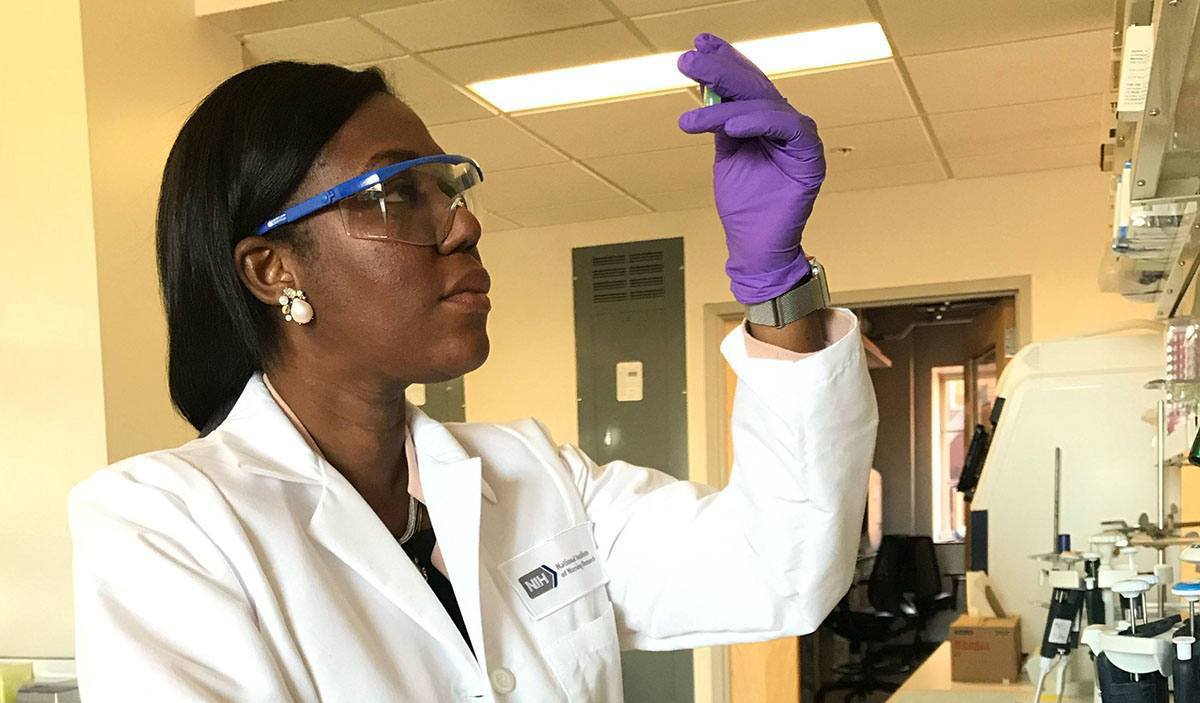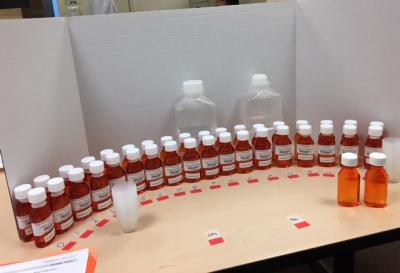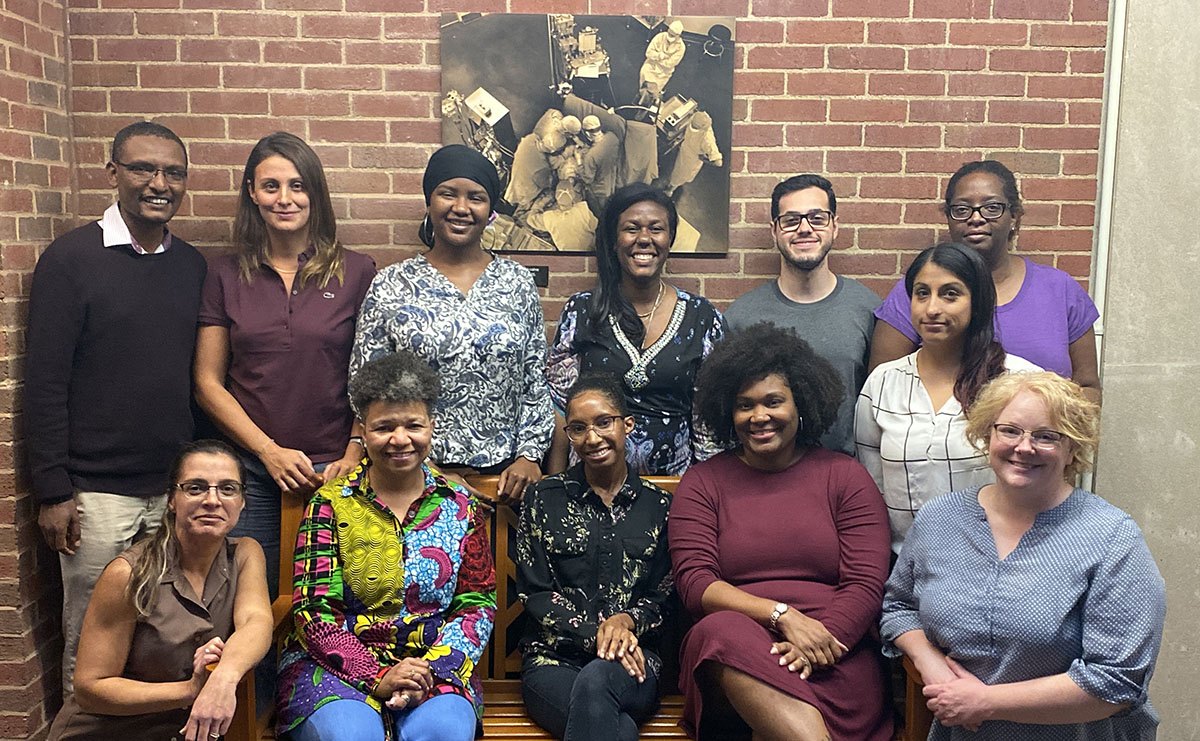Nothing to Sniff At
Paule Joseph explores how variations in taste and smell might contribute to obesity and addiction.


Dr. Paule Valery Joseph
People tend to underappreciate how powerful our senses of smell and taste are, but that doesn’t mean they don’t shape our experience of the world. Gustation and olfaction — science-speak for tasting and smelling, respectively — detect chemicals in our environments that can bait us into scoffing down a delicious pastry or warn us of the potential dangers of food that’s past its prime. Just think of that neglected half-gallon of milk in the back of your fridge on the eve of its expiration date; a quick sniff or sip can answer any doubts you might have about pouring it over a bowl of cereal.
What’s more, it may not only be momentary food decisions that our noses and tongues inform. Changes in smell and taste can have profound effects on our diets and long-term quality of life. For instance, when the olfactory neurons that process smells are suppressed in mice, the animals become more active and burn calories at a faster rate.
At the National Institute on Alcohol Abuse and Alcoholism (NIAAA), IRP tenure-track investigator Paule Joseph, Ph.D., C.R.N.P., studies variations in smell and taste perception and their association with metabolic disorders like obesity and diabetes, as well as the role they might play in substance use disorders.
To sniff out the link between our chemical-sensing systems and disease, Dr. Joseph is looking at conditions that reduce or distort smell and taste, known as chemosensory disorders.

Postbaccalaureate fellow Alexis Franks inhales through the dome of an olfactometer that measures odor concentration.
“I really believe studying obesity and addiction in the context of chemosensory disorders is important to understand how the chemical senses may contribute to overconsumption of food or alcohol,” she explains.
Chemosensory disorders can be genetic or result from illness or injury. Dysgeusia, for example, is a condition in which a foul, salty, rancid, or metallic taste persists in the mouth and can arise from smoking, certain medications, chemotherapy, or even head trauma. In other cases, changes in smell and taste can be harbingers of disease. Some people who go on to develop Parkinson’s disease suffer a decline in their ability to smell years before they exhibit movement problems or receive a Parkinson’s diagnosis. Moreover, considering that many people experience a diminishing ability to taste as they age, studying chemosensory disorders could have broader implications for treating common sensory issues.
Disturbances in taste and smell first sparked Dr. Joseph’s interest when she was working as a family nurse practitioner with patients who had undergone bariatric surgery for weight loss.
“When I was working in the clinic, one of the complaints patients often had was that food didn’t taste the same after surgery,” she says. This observation first led her to the University of Pennsylvania and the Monell Chemical Senses Center in Philadelphia and then to the NIH, where she was selected as a Lasker Clinical Research Scholar in 2019. Currently, Dr. Joseph serves as chief of the Section of Sensory Science and Metabolism at NIAAA, with a joint appointment at the National Institute of Nursing Research (NINR).

Taste tests help Dr. Joseph determine patients’ sensitivity to sweetness, saltiness, and bitterness.
Her efforts to improve the diagnosis, prevention, and management of smell and taste variations begin by understanding their biological underpinnings. In one study, she and her collaborators measured sweet taste sensitivity in children and adolescents with different genetic variants in genes related to taste. They found that the ability to detect sweetness varies widely across children, with the less-sensitive children needing more than six times the amount of sugar dissolved in a glass of water to detect the same level of sweetness as their more sensitive peers.
Interestingly, children who had a genetic variant that made them more sensitive to bitterness also perceived sweetness at lower sugar concentrations. Those differences appeared to affect day-to-day eating habits: the children who were less sensitive to sweet and bitter tastes had a higher daily sugar intake and tended to weigh more relative to their heights than those who had a lower ability to detect sweetness.
“Understanding variability of the chemical senses may help us understand how sensation affects what a person chooses to eat or drink and how these sensory-motivated choices affect an individual’s health,” says Dr. Joseph. What’s more, learning how smell and taste influence the development of obesity and overconsumption of alcohol could lead to early interventions for slowing the progression of disease. “From a clinical perspective, my dream is that we include routine assessments of taste and smell like we do with regular vision and hearing exams. Tracking how these senses change over time could help us identify people who may be at risk for health problems.”

Dr. Joseph’s IRP team (top left to bottom right): Markos Woldeyohaness, Carlotta Vizioli, Brianna Brooks, Paule Valery Joseph, Rodrigo Ortiz-Figueroa, Monica Atkinson, Rosario Jaime-Lara, Stephanie Chidester, Karen Taylor, Alexis Franks, Carolyn Allen, and Claudia Colina-Prisc.
Of the five senses, smell and taste might be the least understood. Nothing has made that more apparent than the global outbreak of COVID-19, which can strip a person of those capabilities. It is still largely unknown how the virus that causes COVID-19 short-circuits those senses, but Dr. Joseph has lent her expertise to various efforts in order to solve the mystery, including the Global Consortium for Chemosensory Research, a group of more than 600 scientists, clinicians and patient advocates across 63 countries dedicated to collecting and analyzing data regarding taste and smell dysfunction due to COVID-19.
“COVID-19 has pushed scientists to be creative and demonstrated the value of collaboration to address emerging issues experienced by patients during this pandemic,” says Dr. Joseph. “The fact that 15 to 20 percent of people who lost their senses of taste and smell due to COVID have not recovered them completely calls for more research into the underlying mechanisms of the virus and the far-reaching health effects that loss can have in the long run.”
Paule Joseph, Ph.D., C.R.N.P., is a NIH Lasker Clinical Research Scholar and chief of the Section of Sensory Science and Metabolism at the National Institute on Alcohol Abuse and Alcoholism (NIAAA), with a dual appointment at the National Institute of Nursing Research (NINR).
This page was last updated on Wednesday, May 24, 2023